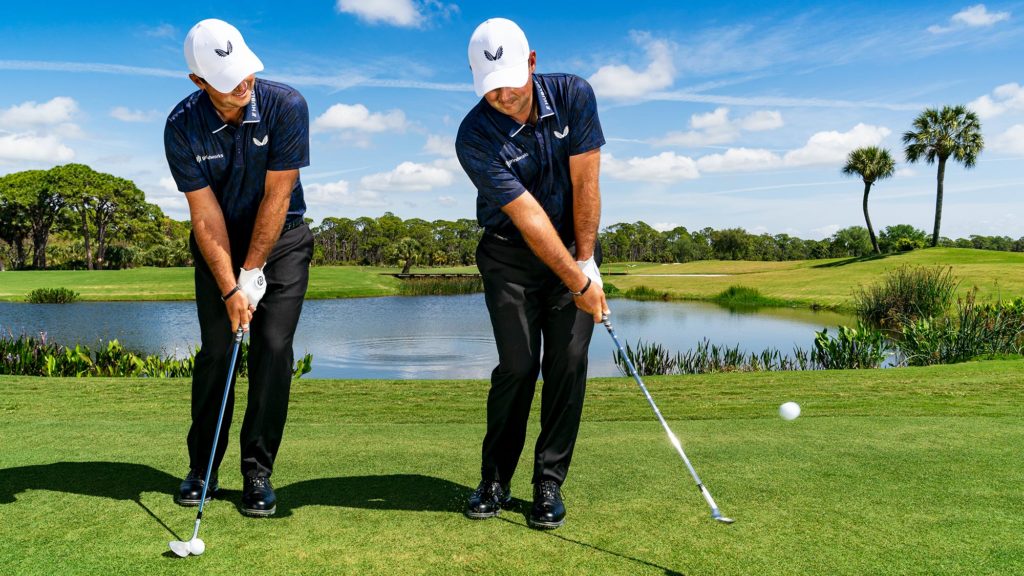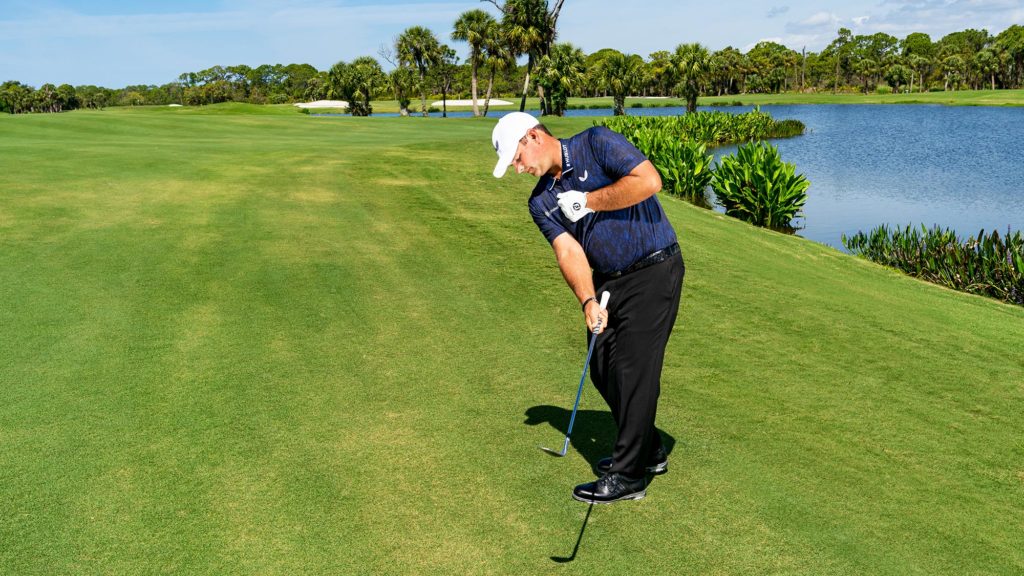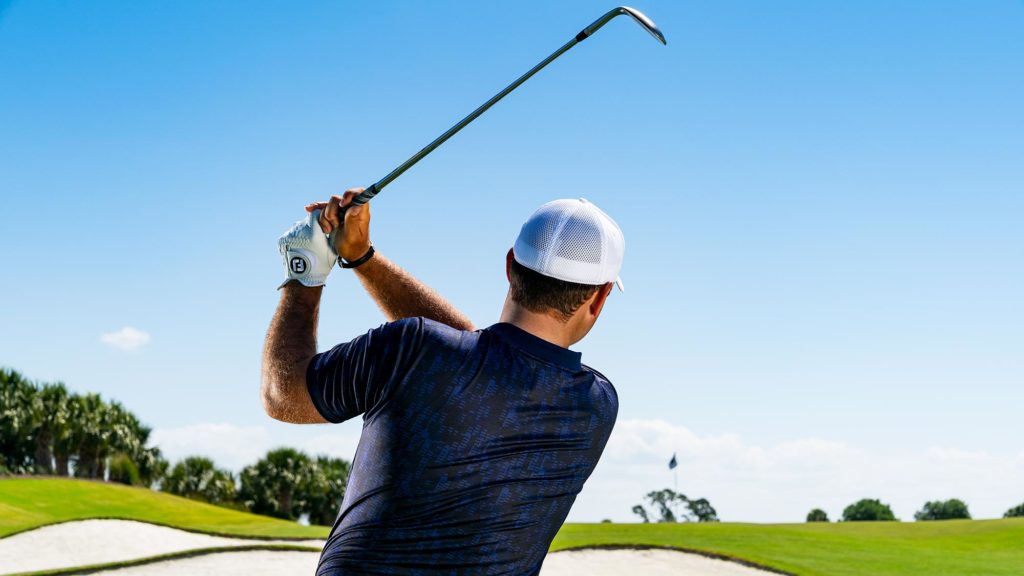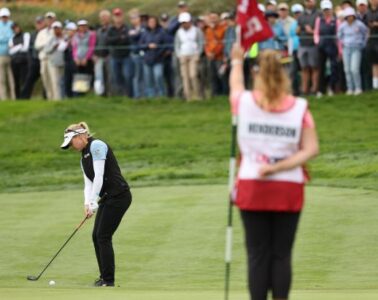Patrick Reed shares some smart tips for scoring around the greens.
Swing coach David Leadbetter likes the nickname Magic Hands for his student Patrick Reed, citing his ability to visualise and create short-game shots that most can’t. It might seem like hyperbole – even blasphemy – to
compare Reed’s wizardry to that of the late Seve Ballesteros, perhaps the best short-game player of all time, but there are similarities.
“There’s a conventional wisdom about how to execute these shots, but just like Seve, Patrick does it his own way,” Leadbetter says. “He sees what he wants the ball to do, and then his body and hands make it happen.”
Reed says his short-game prowess was borne out of necessity. Decades ago, his full-swing shots could be described as an all-out assault on the golf ball, which left him in some exotic places on the course. Without skill around the greens, his pro career wasn’t going to amount to much.
“The short game is a huge equaliser,” Reed says. “The guys who can save themselves around the greens when their full swings are off are the ones who win golf tournaments.”
Acknowledging that countless hours of practice fine-tuned his short game, Reed says anyone can copy some of the things he does without spending all day chipping and pitching. (He will share his advice on the following pages.) If you focus on short-game practice when you do find time, you’ll reap a lot more benefit than hitting a bucket of balls, Reed says.
“It’s three-fourths of my practice time,” he says. “The better you get with this area of your game, the easier it will be to turn 5s into 4s, 4s into 3s and 3s into 2s.”

Setup: Take a different approach
Rather than set up with his body open in relation to the target – common advice for short shots, Reed addresses the ball with his right foot set back [right] and his shoulders square. “This helps me swing down on a shallower path from the inside, and with the face slightly open, the clubhead will glide along the grass,” he says. “Most amateurs will find this set-up more forgiving.”
Reed says his closed stance also makes it easier to favour the front foot throughout the swing – key to crisp contact. “You want to keep at least 60 to 65 percent of your weight on the front foot. Your lower body should be very stable with little movement.”
From an open stance, amateurs tend to hang on their back foot and move their lower body too much. That makes it tough to consistently hit down on the ball and then brush the grass, he says.
Another way to improve consistency is to alter your set-up – not your technique – to produce different shots, he says. Reed narrows his stance and plays the ball back for lower-trajectory chips and pitches that have checking spin and widens his stance and plays the ball increasingly forward to raise the height. “But my sternum is always ahead of the ball at address, and I feel comfortable.”
The swing: Release the club correctly
“No matter the shot – long, short, high or low – you’ve got to keep your chest moving, especially towards the target before and after the ball is struck,” Reed says.
The rotation of the upper body allows you to release the club correctly, he says. A common mistake is to stop turning at impact while the arms and hands keep swinging. That leads to poor contact and unpredictable trajectory. The club, arms and body should move together in the through-swing.
“The right hand is working up through impact, which keeps the clubface pointing towards the sky,” he says. “But if the body stops, you’ll likely blade the shot. You don’t want to flick at it; you want to turn through it.”
Practice
You can improve the quality of your short-game shots with two drills that Reed does.

The first is trying to return the golf shaft at impact to its orientation at address – which is key to avoid flubbing these finesse shots. “If I’ve got the shaft leaning 10 degrees towards the target at address, I want 10 degrees of shaft lean as I meet the ball,” he says. A great visual aid is to stick an alignment rod into the ground next to your ball [right], and make rehearsal swings or hit shots trying to copy the angle of that rod with your shaft at impact. “Experiment with trying to match various alignment rod and shaft angles to see how the ball’s trajectory changes,” Reed says. “Just remember to always set up with your sternum ahead of it.”

The second drill improves body rotation and trains the correct upward movement of the right hand through impact, Reed says. You might have seen golfers practice hitting chips and pitches one-handed to help feel how the club should glide along the turf as it strikes the ball. “But it’s not an arm-only drill,” Reed says. “You want to rotate your body towards the target as you swing the club down and through with your right hand [right]. To remind you, put your left hand on your sternum and make one-handed swings – or even hit shots – really focusing on body turn. This allows the club to skim the grass and pop the ball up with minimal wrist action until after impact. Note how the clubface is still skyward in the follow-through.”

Simplify your choices
“I only use two wedges around the greens, a 61-degree and a 57,” Reed says. “Why try to perfect four or five clubs when you only really need two?”
Aim small, miss small
“When chipping, I’m always trying to get the ball to hole out like a putt at normal speed. You should, too,” Reed says. “If you think about trying to get the ball within 10 feet of the hole and you mis-hit it, you’re going to be way short. But if you try to hole out and mis-hit it, you’ll probably leave it a lot closer.”
Work on trajectory
“From each spot in a short-game area, I’ll hit three different shots, paying attention to what the ball does,” Reed says. “I’ll hit one low, one medium and one high, and then move on to another spot. This really improves ball control.”
Control distance with your brain
“When it comes to landing the ball where you want, a lot of it comes from feel,” Reed says. “I’ll make two or three practice swings behind the ball, getting my body in tune for how big a swing I’ll need to make. Then it’s just a matter of stepping in and recreating that swing.”
Photographs by John Loomis













